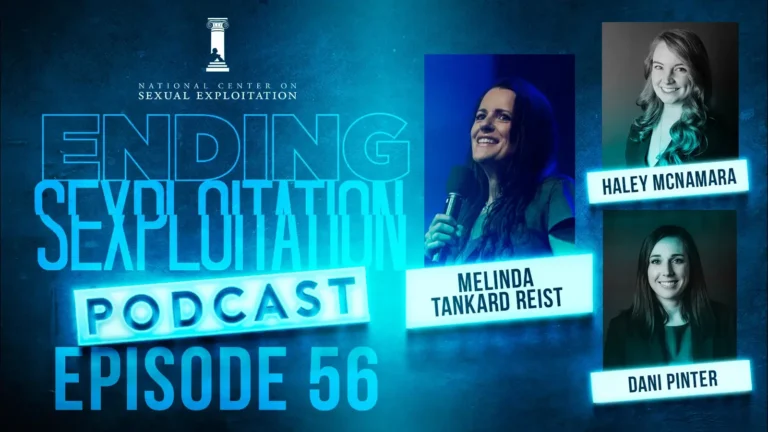The issue of sexual exploitation in this country is more rampant than ever. For instance, despite the obvious injustice of sex trafficking, generating the needed social change in the public and private sector is difficult. In the fight against sexual exploitation it is important to understand the roots of the cause to better address the problems.
Laura J. Lederer, a speaker at the 2016 Coalition to End Sexual Exploitation (CESE) Summit, has been an anti-trafficking advocate for decades. In the late 1970s Lederer played a large role in a new organization called Women Against Violence in Pornography and Media. In 2008, Lederer founded Global Centurion, a non-profit organization dedicated to eradicating modern slavery by focusing on the demand side of the problem. Additionally she has worked at the Department of State, taught at Johns Hopkins and George Washington University, and she is the recipient of many awards.
At the CESE Summit Dr. Lederer spoke on the development of modern day sexual exploitation and the fight to eradicate it. Lederer examined how sexual exploitation became so mainstream in the media. Magazines such as Playboy, Penthouse, and Hustler started the trend of popularizing photos of naked women. Initially the photos in Playboy, while involving nudity, had an “innocent” appeal, however as this type of exploitation became more normalized the content and photos grew more explicit. Publications like Penthouse and Hustler pushed the boundaries in how women were depicted. Increasingly in other magazines and public advertisements pornified images were available everywhere.
Women’s advocacy groups began to speak out against the violence portrayed against women in the media. Sexual violence had become so normalized that it could be seen in TV, movies, and advertisements. Lederer reflected on her involvement in the fight against sexual exploitation and violence against women in the 70s. There was major backlash against the pornography industry from women’s groups of all kinds. Their protests generated extensive media coverage which resulted in temporarily curbing the pornography industry.
Although there seemed to have been some success in shutting down pornography in the media, the industry resurged more powerfully in the 1980s. The beginning of the home computer and video rental age brought sexual exploitation from the streets into the home. The Internet transformed the pornography industry making it much easier and much more deviant.
It was made clear that sexual exploitation was a worldwide problem. The United States government began to take steps to amend their outdated trafficking laws. With the creation of the Trafficking Victims Protection Act of 2000 statues began to be amended, task forces were created, and long awaited changes became reality.
There have been many successes in the fight to eradicate sexual exploitation, but we still have much more to accomplish. Events like the CESE Summit are great ways to unite all the various groups fighting to end sexual exploitation. Having the opportunity to hear some of the important leaders in the anti-trafficking movement such as Dr. Lederer is inspiring to us all.
The next CESE Summit is being held in Washington, DC, on April 4-7, 2018. Visit our website at endsexualexploitation.org/cesesummit2018 to learn more about the goals of the Summit, read about our featured speakers, as well as register for the event. Together we can energize the movement and end sexual exploitation worldwide.



